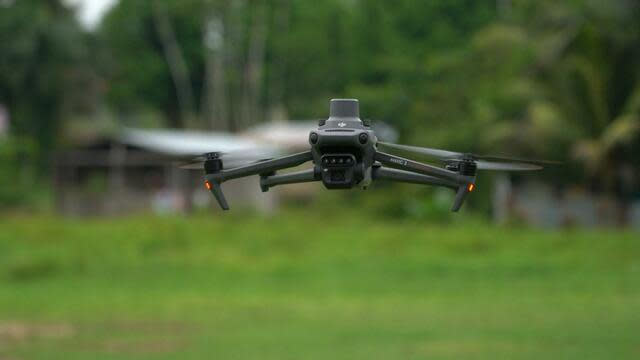In the Peruvian Amazon, tropical diseases pose a growing risk – and scientists are turning to advanced technology, including drones and artificial intelligence, to try to stop outbreaks before they begin.
Iquitos, Peru cannot be reached by road because of the thick jungles and waters surrounding the city. Only planes or boats can reach the metropolis of about half a million people. All that water and vegetation also means an unwelcome guest: Mosquitoes.
Mosquitos can carry tropical diseases like malaria and dengue fever. In 2000, the World Health Organization recorded just half a million global cases of dengue fever, but nearly two decades later, the organization reported 5.2 million cases.
Gabriel Carrasco, who leads the research project at the Cayetano Heredia Peruvian University in Lima, Peru, said the spike in dengue fever shows how climate change affects developing, tropical nations more – even though those countries have a much smaller carbon footprint than industrialized nations.
“Events are more frequent. For example, El Niño is more frequent now than some years ago. (There are) flooding events (and) extreme heat events in areas where they were previously not reported as well,” Carrasco said.

The aftermath of heat and heavy storms can result in ideal breeding grounds for mosquitoes.
Researchers like Carrasco and Bryan Fernandez use drones to take high-resolution photos in and around the Amazon, searching for water bodies that could be breeding sites for mosquitoes. The drones take photos every three seconds, and those images are turned into 3-D images that track water and deforestation. The team also uses weather sensors to track conditions, and small recording devices to monitor changes in what kind of areas are roaming the area.
That information is then fed into an A.I. model that “can predict where an outbreak can be,” Fernandez said.
“The idea now is how we can make those models much more accurate, much more detailed at the village level,” Carrasco explained.
The hope is to spread the technology to areas around the world with limited medicines, vaccines and doctors, Carrasco said. Knowing where the spread is likely can help areas deploy resources strategically. However, that model is still potentially years away, so Carrasco and other researchers will continue searching for answers and doing what they can to help the most vulnerable.
“What we are trying to do is help people in really poor areas to survive,” Carrasco said.
Supreme Court invalidates ban on bump stocks put in place after Las Vegas mass shooting
Breaking down the Supreme Court’s mifepristone abortion pill ruling

Dr. Sarah Adams is a scientist and science communicator who makes complex topics accessible to all. Her articles explore breakthroughs in various scientific disciplines, from space exploration to cutting-edge research.






